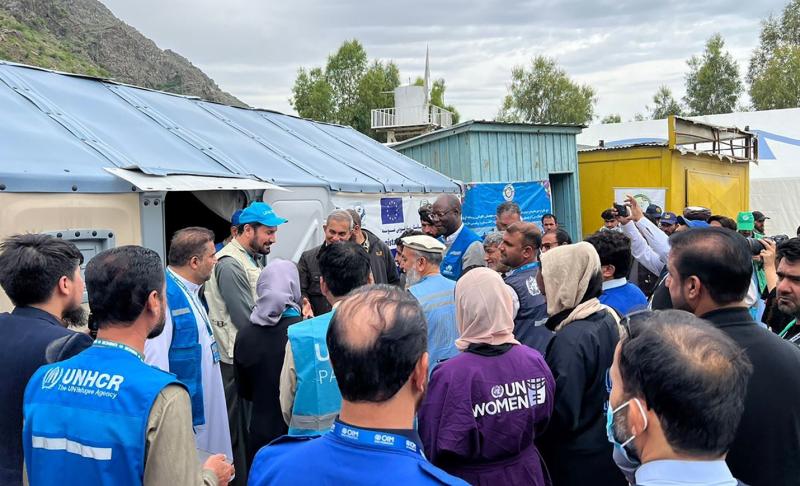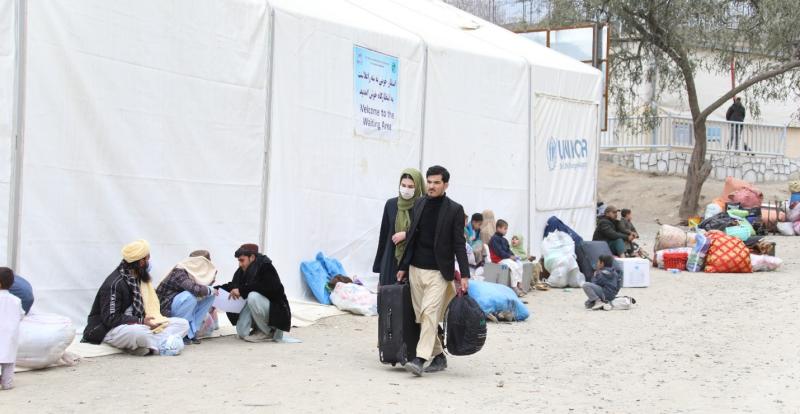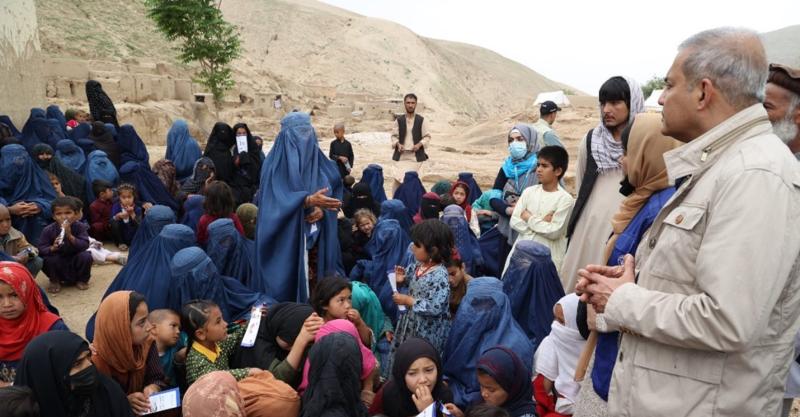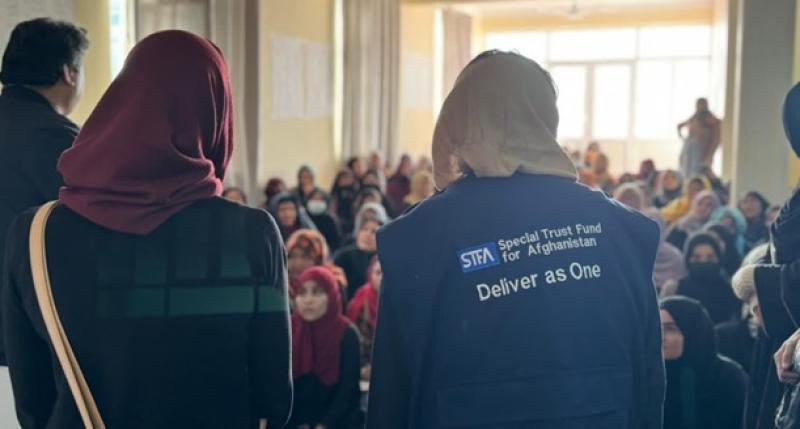

Afghanistan presents one of the most compelling portraits of the complex tapestry of global polycrisis. Amid socio-economic deterioration, exacerbated by natural disasters including droughts, floods, and earthquakes, and massive displacement, Afghanistan’s challenges require not only a coordinated humanitarian response but also long-term durable solutions for development and peace. This is where the UN and partners’ joined-up approach indispensable.

The Scale of Crisis
Since the Taliban takeover in 2021, a diminishing flow of international aid has made service delivery to the Afghan people more challenging. Afghanistan has one of the highest numbers of internally displaced persons (IDPs) globally including a significant surge of over half a million Afghan returnees Pakistan, further straining the country's limited resources. Having visited IDPs and returnees’ temporary camps, I have witnessed first-hand the precarious conditions that they are living in including lack of access to basic services such as safe drinking water, adequate sanitation, healthcare, and jobs.
Afghanistan ranks as the world's seventh most vulnerable country to climate change despite contributing minimally to global greenhouse gas emissions. Natural disasters are becoming a major threat for Afghanistan as floods, earthquakes, and droughts deal major blows for communities with limited capacity to respond to and recover from these shocks. The 2023 earthquakes in Herat, which claimed over 1,500 lives and displaced thousands more, have exposed the country’s vulnerabilities to climate shocks.

The Plight of Afghan Women and Girls
Perhaps no group is more vulnerable in Afghanistan today than women and girls. Since August 2021, the De facto authorities have issued and expanded more than 50 edicts targeting women and girls, alongside several inconsistently enforced provincial-level decrees and practices, restricting the basic rights and fundamental freedoms of women. The exclusion of women from education beyond grade 6 as a human rights violation not only diminishes the economic stability of women and their families but also deprives the society of skilled contributors in all sectors. Without access to continued education, an entire generation of girls will be unable to pursue careers in medicine, engineering, or academia, fields that are crucial for Afghanistan’s future development.
Why ”Delivering as One” through a joined-up approach?
To streamline and synergize the efforts of various United Nations organizations operating in Afghanistan, where humanitarian needs are vast and complex, the Delivering as One (DaO) approach ensures that the collective expertise and resources of the UN are leveraged more effectively.
By pooling resources and aligning strategies, we can address the multifaceted challenges of humanitarian aid, development, and peacebuilding (HDP) in a cohesive manner within the HDP nexus. As the world and UN gear toward the “Summit of the Future” this year to strengthen international cooperation and multilateralism, the DaO approach has been a critical example to showcase the effectiveness of coordination and collaboration of multiple donors and UN organizations in addressing complex challenges like those faced in Afghanistan.
The benefit of this approach is exemplified by the Special Trust Fund for Afghanistan (STFA), which the UN launched in 2021. The STFA is already showing a positive impact of DaO by delivering a more coherent response to the HDP nexus needs in Afghanistan.

Focusing on Basic Human Needs and Durable Solutions
Addressing basic human needs in Afghanistan is not merely about providing temporary relief but about establishing the foundations for long-term resilience and development. By 2024, the STFA has mobilized over US$230 million from 13 contributing donors, providing crucial support to approximately five million Afghans, particularly focusing on women and vulnerable groups. 17 UN organizations have come together to deliver the support through joint programmes.
The support for basic human needs must also include durable solutions for the IDPs and returnees. This means not only meeting immediate needs such as food, water, and shelter but also providing access to education, healthcare, and livelihood opportunities. These are essential for their reintegration into society, reducing dependency on aid, and laying the groundwork for long-term development.
A Call for Sustained International Attention and Support
As global attention fluctuates with increasing conflicts and wars around the world, Afghanistan risks becoming a forgotten crisis, yet the needs of its people are more pressing than ever.
We call on the international community and donor partners to renew their commitment to the people in Afghanistan, to mitigate the current humanitarian crisis and support a strategy that bridges humanitarian aid with development and peace efforts.
“Delivering as One” through a joined-up approach is as necessary as efficient to address the complex challenges: Through our unified efforts, support for basic human needs, and a focus on durable solutions for the displaced, particularly women and girls, we can help build the resilience of people in Afghanistan.
Blog
Indrika Ratwatte, Chairperson of the STFA Steering Committee
Deputy Special Representative of the Secretary-General, UN Resident and Humanitarian Coordinator